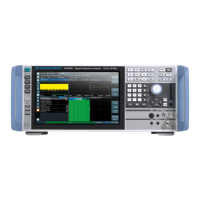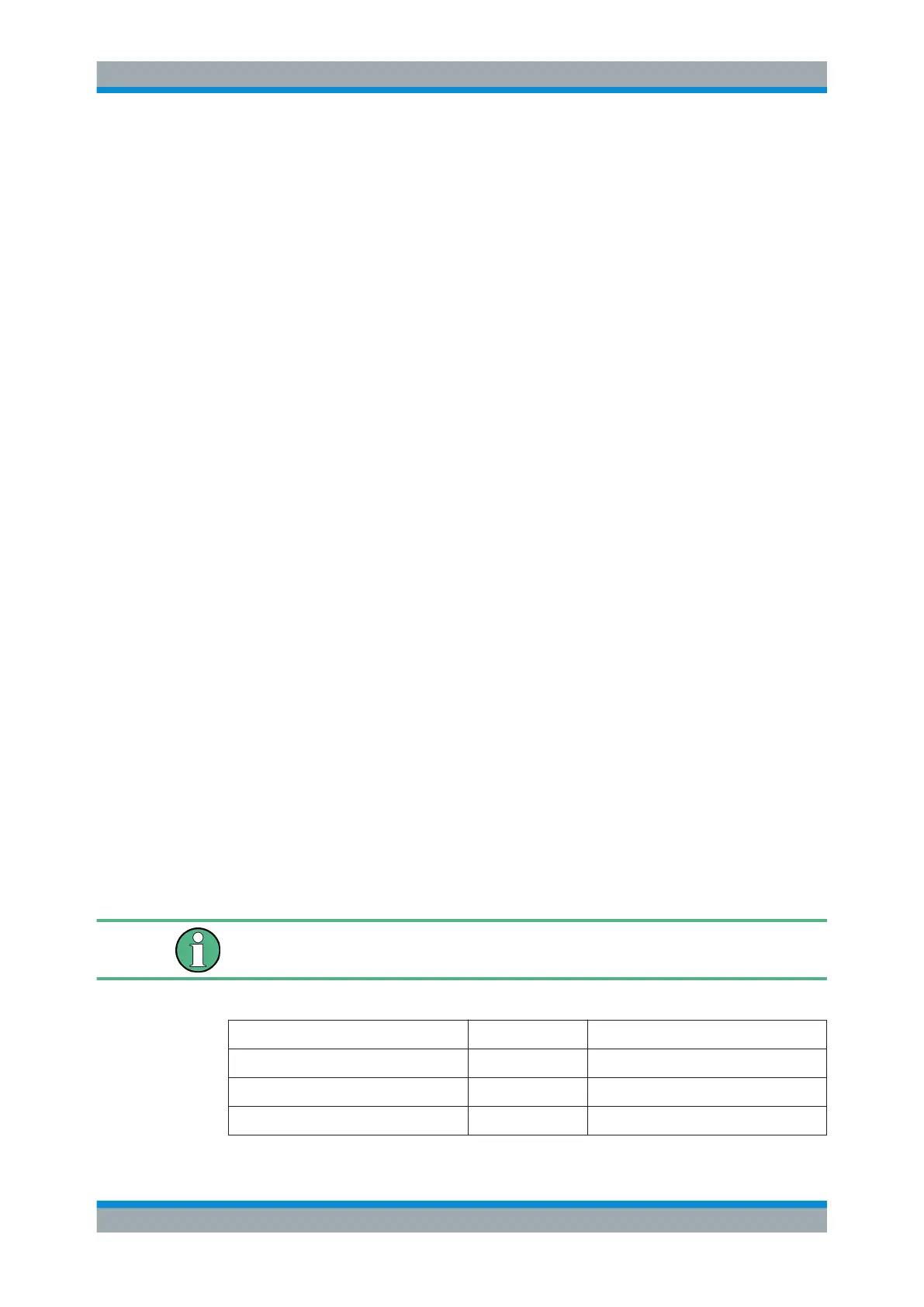Common Measurement Settings
R&S
®
FSVA3000/ R&S
®
FSV3000
389User Manual 1178.8520.02 ─ 01
Remote command:
CALCulate<n>:SPECtrogram:FRAMe:SELect on page 967
Continue Frame ← Spectrogram Frames
Determines whether the results of the previous sweeps are included in the analysis of
the next sweeps for trace modes "Max Hold" , "Min Hold" , and "Average" .
This function is available in single sweep mode only.
●
On
When the average or peak values are determined for the new sweep, the results of
the previous sweeps in the spectrogram are also taken into account.
●
Off
The average or peak values are determined from the results of the newly swept
frames only.
Remote command:
CALCulate<n>:SPECtrogram:CONTinuous on page 966
Frame Count ← Spectrogram Frames
Determines how many frames are plotted during a single sweep (as opposed to a con-
tinuous sweep). The maximum number of possible frames depends on the history
depth (see " History Depth " on page 509).
Remote command:
CALCulate<n>:SPECtrogram:FRAMe:COUNt on page 967
Clear Spectrogram ← Spectrogram Frames
Resets the spectrogram result display and clears the history buffer.
This function is only available if a spectrogram is selected.
Remote command:
CALCulate<n>:SPECtrogram:CLEar[:IMMediate] on page 966
8.5.3 Reference: List of Available RRC and Channel Filters
For power measurement a number of especially steep-edged channel filters are availa-
ble (see the following table). The indicated filter bandwidth is the 3 dB bandwidth.
For RRC filters, the fixed roll-off factor (a) is also indicated.
The available Gaussian 3 dB sweep filters are listed in the R&S FSV/A data sheet.
Table 8-3: Filter types
Filter Bandwidth Filter Type Application
100 Hz CFILter
200 Hz CFILter
300 Hz CFILter
Bandwidth, Filter and Sweep Configuration

